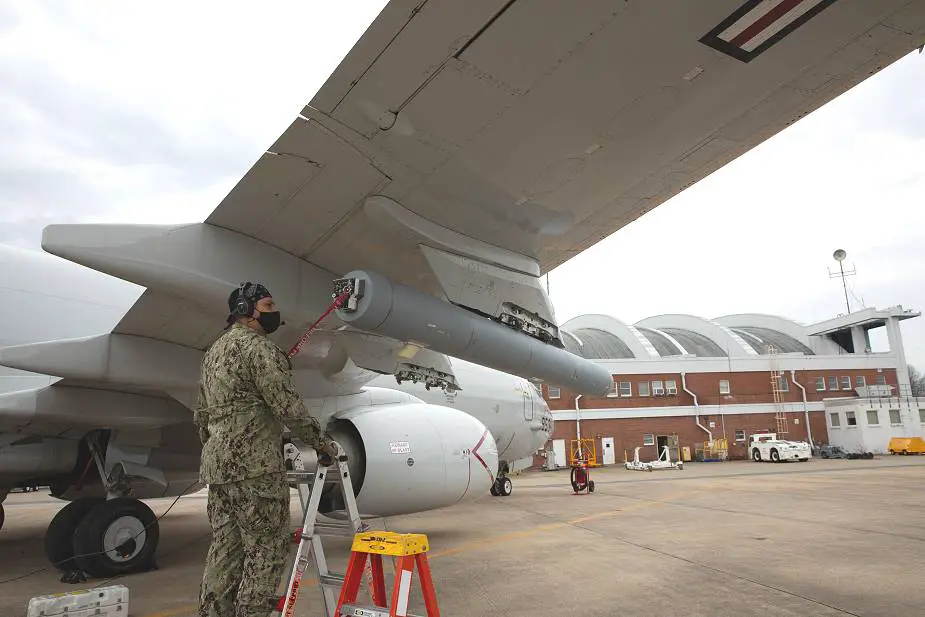According to information published by the United States Naval Air Systems Command (NAVAIR) on April 9, 2021, an Air Test and Evaluation Squadron (VX) 20 P-8A Poseidon successfully completed an airworthiness test of a pod-mounted radio frequency countermeasure (RFCM) prototype at the Naval Air Warfare Center Aircraft Division (NAWCAD) Atlantic Test Ranges, March 12, 2021.
Follow Navy Recognition on Google News at this link
 A member of United States Air Test and Evaluation Squadron (VX) 20 puts a pod-mounted radio frequency countermeasure system on a P-8A Poseidon, March 12. The pod successfully completed an airworthiness test at the Naval Air Warfare Center Aircraft Division (NAWCAD) Atlantic Test Ranges. (Picture source U.S. Navy photo)
A member of United States Air Test and Evaluation Squadron (VX) 20 puts a pod-mounted radio frequency countermeasure system on a P-8A Poseidon, March 12. The pod successfully completed an airworthiness test at the Naval Air Warfare Center Aircraft Division (NAWCAD) Atlantic Test Ranges. (Picture source U.S. Navy photo)
The first-of-its-kind radiofrequency defense decoy could allow the P-8A to thwart enemy radiofrequency missile attacks. Constantly looking for upgrades to the P-8A, PMA-290 set out to find a solution to a potential threat from surface-to-air radio frequency missiles.
Outlining their needs and running lead on the project, PMA-290 brought in the Advanced Tactical Aircraft Protection Systems Program Office (PMA-272), the Rapid Prototyping, Experimentation & Demonstration (RPED) team, and the NAWCAD Aircraft Prototype Systems Division (APSD) to get the ball rolling. PMA-290 manages the acquisition, development, support, and delivery of the Navy's Maritime Patrol and Reconnaissance Aircraft.
The RPED team supported APSD in designing the RFCM pod, which integrated the proven AN/ALE-55 Fiber Optic Towed Decoy from PMA-272 into a shell. The team developed the shell design based on the certified AGM-84 Harpoon missile, and then incorporated unique tracks and housing to fit and deploy the decoy.
The Boeing P-8A Poseidon is a modified version of the civilian aircraft 737-800ERX which is used as maritime patrol aircraft by the U.S. Navy. The aircraft was developed and is produced by the American company Boeing Defense, Space & Security.
The P-8A offers commonality with the 737 fleet and other military platforms that use the 737 airframe. The commonality in spares and training for crews reduces costs and enables military operators to leverage support throughout the world.
The P-8A efficiently conducts anti-submarine warfare, anti-surface warfare, intelligence, surveillance, reconnaissance, and humanitarian response. These capabilities are enhanced through secure, interoperable, net-ready systems. While the aircraft is also equipped with high-quality weapon systems, it also has an open architecture to allow for expansion.
The P-8A has a length of 39.47 m, a height of 12.83 m, and a wingspan of 37.64 m. It has a maximum gross takeoff of 85,820 kg and can fly at a true airspeed of 907 km/h with an altitude of 12,496 m. The aircraft has a maximum range of 1,200 nautical miles radius with four hours on station and can be armed with torpedoes and cruise missiles.



